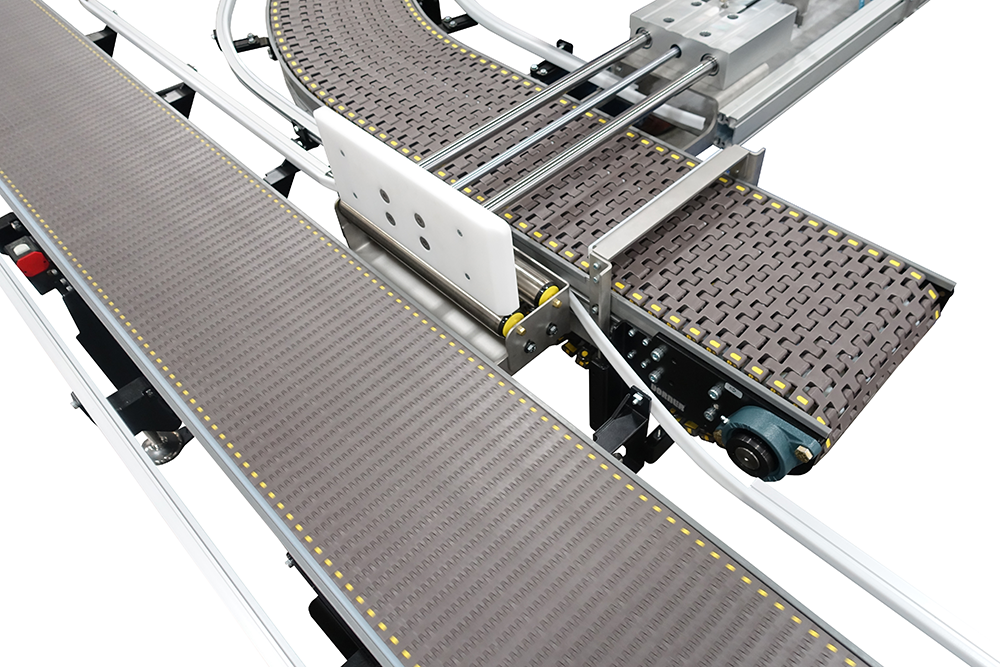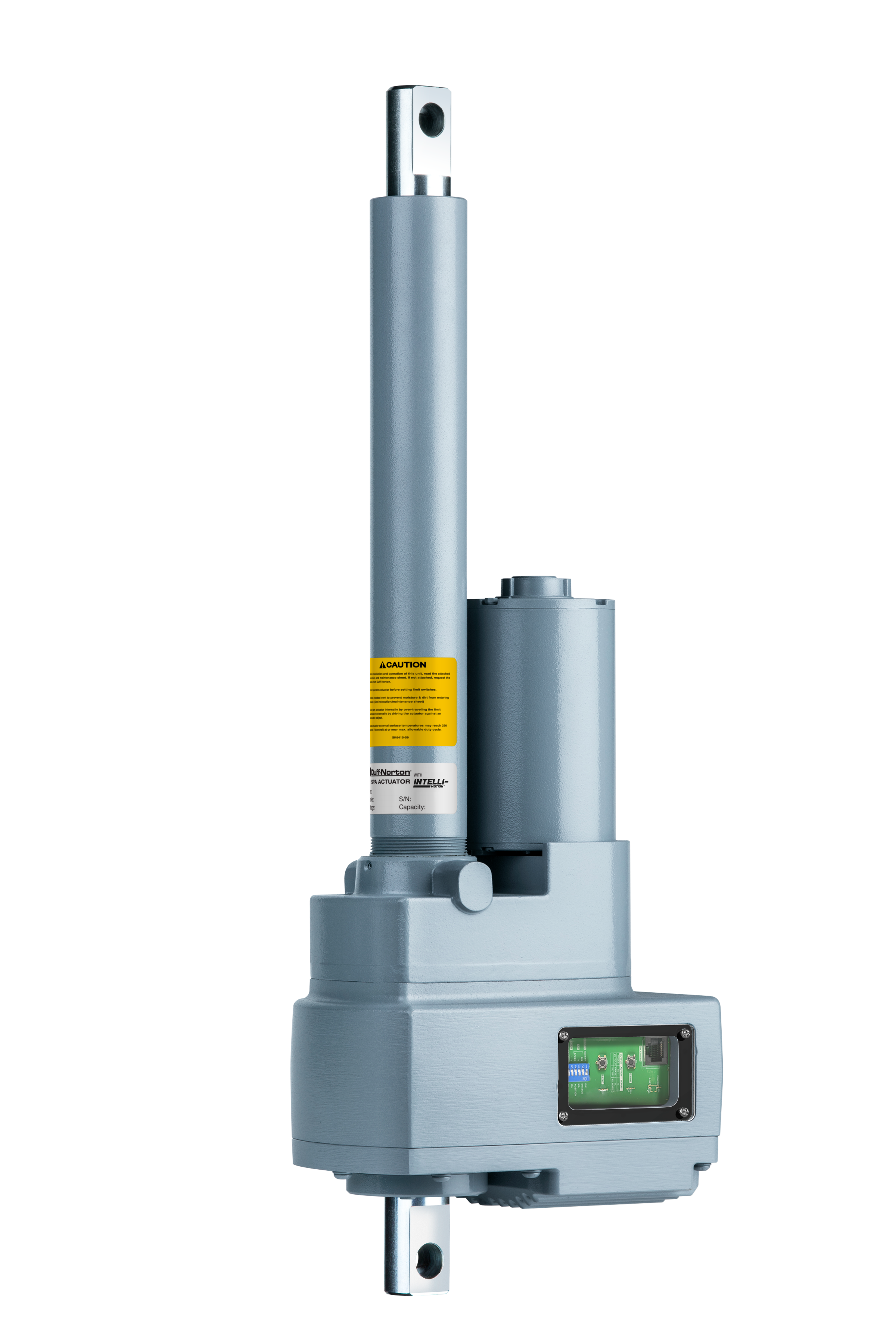Smart Actuators
What Is a Smart Actuator?
 A smart actuator is an integrated actuator that includes onboard controls, communication capabilities, position control and feedback, and fault detection. This makes the actuator easy to install, use, program, and monitor, while eliminating the need for external controls.
A smart actuator is an integrated actuator that includes onboard controls, communication capabilities, position control and feedback, and fault detection. This makes the actuator easy to install, use, program, and monitor, while eliminating the need for external controls.
Equipped with integrated hardware and technology beyond those of a standard actuator, a smart actuator is robust enough to handle high duty cycle applications while bringing plug-and-play control to industrial material handling applications.
TALK TO SMART ACTUATOR EXPERT ABOUT YOUR APPLICATION
How Can You Benefit from Smart Linear Actuators?
Smart linear actuators combine intelligent solutions with robust machinery to enable easy installation, configuration, and operation so systems can get up and running quickly and perform reliably. By incorporating these intelligent capabilities, such as those available from a variable frequency drive (VFD) or electronic programmable limit switches (EPLS), smart actuators become easier to set up, operate, adjust, troubleshoot, and monitor.
and operation so systems can get up and running quickly and perform reliably. By incorporating these intelligent capabilities, such as those available from a variable frequency drive (VFD) or electronic programmable limit switches (EPLS), smart actuators become easier to set up, operate, adjust, troubleshoot, and monitor.
- Improved Control and Feedback: Integrated analog and digital I/O can provide positioning feedback and enable precise position control via a programmable logic controller (PLC). As another operational option, Ethernet/IP connectivity can enable direct connection to a PLC, providing various control options and configurations to choose from when programming motion sequences. Utilizing a VFD, combined with an absolute position encoder, can result in precise motor movements that ensure products are moved safely and efficiently.
- Increased Productivity: A smart actuator improves duty cycles, extending the time an actuator can operate reliably. This ultimately increases production rates. VFD control also enables automatic soft starting and smooth ramp-up acceleration to prolong an actuator’s operational life.
- Simplified Programming: Smart actuators make it easy to program specific parameters based on your application needs. For example, EPLS define specific stopping points, helping to provide greater precision and accuracy and increased ability to repeat motions as compared to actuators that use mechanical limit switches. Integrated VFDs and onboard control systems allow operators to program specific motion patterns and adjust actuator speed to the optimal rate to match application needs.
- Quick and Easy Installation and Setup: Optional analog and digital or Ethernet/IP communications allow a smart actuator to directly connect with a PLC or other control or monitoring system without any intermediary components. Other actuator configurations require a separate VFD or contactor control system housed in an external control panel.
What Applications Are Ideal for Smart Actuators?
Smart actuators are designed to provide reliable operation, enable precise motion control, and simplify applications, especially those that can benefit from automation technology. By incorporating VFD control into an actuator, operators gain the ability to program specific movement patterns with variable speeds, expanding the range of applications a smart actuator can be applied to. Some of these include:
- Providing damper control for exhaust systems: actuators assist with adjusting a damper’s position while also providing feedback on its position
- Material handling, packaging, and sorting: smart actuators are used to move and divert product inside a plant to prepare it for distribution, storage, etc.
- Balancing loads on automated guided vehicles (AGV): controllability and feedback capabilities increase the reach of smart actuators for use on AGVs that move around a plant, receiving goods and transporting them to other production stages.
DOWNLOAD OUR AUTOMATED GUIDED VEHICLES (AGVs) BROCHURE - Synchronizing lifting tables: smart actuators synchronize motion to ensure lift tables are at the appropriate height so workers can comfortably complete tasks.
- Controlling HVAC systems: smart actuators control, divert, or stop airflow in facilities with mine ventilation systems, dust collection, chemical fumes, and more.
Smart vs Standard Linear Actuators
Equipped with integrated hardware and technology beyond those of a standard actuator, a smart actuator, like Columbus McKinnon's Duff-Norton® brand SPA Linear Actuator with Intelli-Motion™️, is robust enough to handle high duty cycle applications while bringing plug-and-play control to industrial material handling applications.
Common Smart Actuator Applications
The Duff-Norton SPA Linear Actuator with Intelli-Motion™️ is a smart actuator that gives you the ability to program specific movement patterns with variable speeds, making it a versatile, reliable option. Let's take a closer look at how our smart actuator can improve some of your common motion control applications.

 North America - EN
North America - EN




